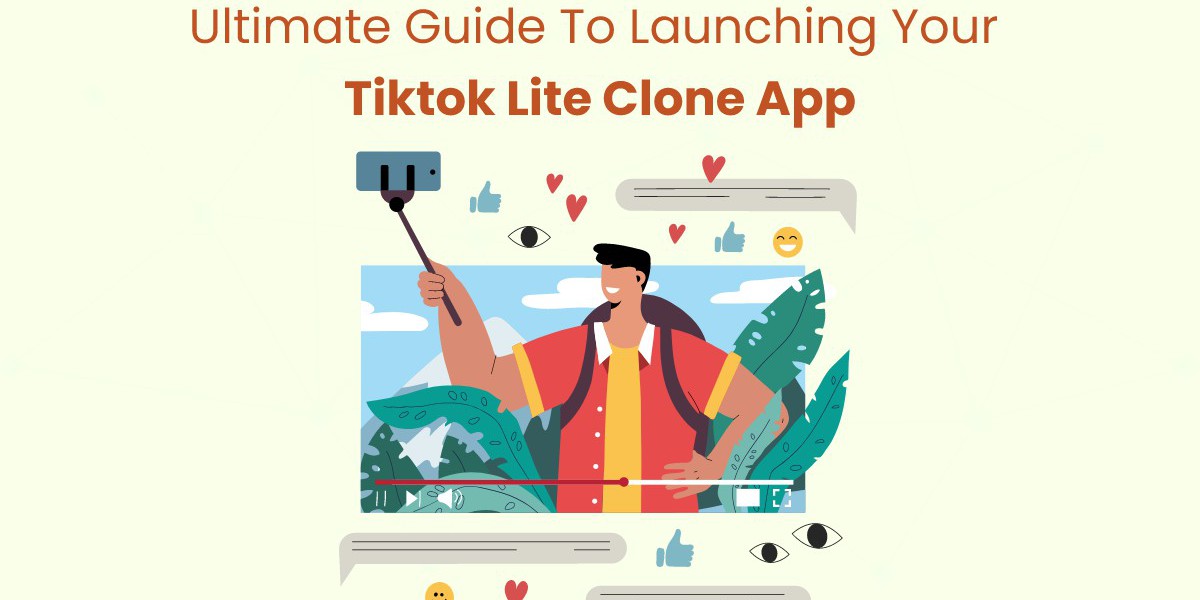The rise of TikTok has revolutionized the social media landscape, captivating millions with its engaging short-form video content. However, in regions with limited internet access and older devices, the full-featured TikTok app may not perform optimally. This has created an opportunity for entrepreneurs to launch TikTok Lite clone apps, which offer a streamlined version of the platform to meet the needs of these users. This ultimate guide will walk you through the essential steps to successfully launch your TikTok Lite clone app.
Understanding TikTok Lite
What is TikTok Lite?
TikTok Lite is a lightweight version of the TikTok app designed to operate smoothly on devices with limited storage and slower internet connections. It retains the core functionalities of TikTok, such as video creation, viewing, and sharing, while minimizing data and storage requirements.
Why Launch a TikTok Lite Clone?
Launching a TikTok Lite clone can tap into a significant and often underserved market. Users in developing countries and those with budget smartphones can benefit from a lightweight app that delivers a similar experience to the full version without resource-heavy demands.
Step 1: Market Research and Feasibility Study
Identifying Your Target Audience
To ensure the success of your TikTok Lite clone app, it’s crucial to identify your target audience. Focus on regions with high smartphone penetration but limited access to high-speed internet. Understanding the demographics, preferences, and pain points of these users will help you tailor your app to their needs.
Analyzing Competitors
Examine existing Lite apps and competitors in the market. Identify their strengths and weaknesses, and look for gaps that your app can fill. This analysis will help you create a unique value proposition and position your app effectively in the market.
Step 2: Defining Core Features
Essential Functionalities
Your TikTok Lite clone should focus on essential functionalities that provide a seamless user experience. Key features to include are:
- User Registration and Profile Management: Easy sign-up process and profile customization.
- Video Creation and Editing: Basic video recording and editing tools.
- Content Discovery: Explore and discover videos through feeds and hashtags.
- Social Interactions: Like, comment, and share videos.
- Notifications: Alerts for new followers, comments, and likes.
Optimizing for Performance
Ensure that your app is optimized for low-end devices and slow internet connections. This includes reducing the app size, optimizing loading times, and minimizing data usage. A smooth and responsive user experience is crucial for retaining users.
Step 3: Choosing the Right Technology Stack
Backend Development
Choose a robust backend infrastructure that can handle large volumes of data and user interactions. Popular backend technologies include Node.js, Python with Django, and Ruby on Rails. Ensure your backend is scalable to accommodate growing user numbers.
Frontend Development
For the front end, use lightweight frameworks and libraries to ensure fast performance. React Native and Flutter are excellent choices for developing cross-platform apps with a smooth user interface.
Cloud Services and Storage
Utilize cloud services such as AWS, Google Cloud, or Azure for scalable storage and server solutions. Cloud services can help you manage data efficiently and ensure your app performs well under varying loads.
Step 4: Design and User Experience
User-Centric Design
Focus on creating a user-friendly design that is intuitive and easy to navigate. The user interface should be clean, with a clear layout that prioritizes essential features. Pay attention to the user journey and ensure that interactions are smooth and enjoyable.
Minimizing Data Consumption
Incorporate features that reduce data consumption, such as:
- Adaptive Bitrate Streaming: Automatically adjust video quality based on the user’s internet speed.
- Data Saver Mode: Allow users to toggle a mode that minimizes data usage.
- Efficient Caching: Cache frequently accessed data to reduce load times and data usage.
Step 5: Development and Testing
Agile Development Approach
Adopt an agile development methodology to ensure flexibility and adaptability throughout the development process. This approach allows for iterative development, continuous feedback, and quick adjustments based on user input and testing results.
Rigorous Testing
Conduct thorough testing to identify and fix bugs, optimize performance, and ensure a seamless user experience. Types of testing to perform include:
- Functional Testing: Verify that all features work as intended.
- Performance Testing: Assess the app’s responsiveness and stability under different conditions.
- Usability Testing: Gather feedback from real users to identify any usability issues.
- Security Testing: Ensure the app is secure and user data is protected.
Step 6: Monetization Strategies
In-App Advertising
Incorporate various ad formats, such as banner ads, video ads, and sponsored content, to generate revenue. Ensure that ads are not intrusive and do not disrupt the user experience.
In-App Purchases
Offer premium features or exclusive content through in-app purchases. This can provide an additional revenue stream while enhancing the user experience.
Partnerships and Sponsorships
Collaborate with brands and influencers for sponsored content and partnerships. This can increase your app’s visibility and generate revenue through sponsorship deals.
Step 7: Marketing and Launch
Pre-Launch Campaign
Create buzz around your app with a pre-launch marketing campaign. Use social media, influencers, and online communities to generate interest and anticipation.
App Store Optimization (ASO)
Optimize your app store listing with relevant keywords, an engaging description, and high-quality screenshots and videos. Positive reviews and ratings can also improve your app’s visibility and attract more users.
Post-Launch Promotion
Continue promoting your app after launch to maintain momentum and attract new users. Utilize social media marketing, content marketing, and paid advertising to reach a wider audience.
Step 8: Gathering Feedback and Iteration
User Feedback
Actively seek feedback from users to understand their needs, preferences, and pain points. Use this feedback to make informed decisions about future updates and improvements.
Continuous Improvement
Regularly update your app with new features, performance enhancements, and bug fixes. Staying responsive to user feedback and market trends is crucial for maintaining user satisfaction and retention.
Conclusion
Launching a TikTok Lite clone app can be a highly rewarding venture if approached with careful planning and execution. By conducting thorough market research, focusing on essential features, optimizing performance, and implementing effective monetization strategies, you can create a successful app that caters to an underserved market. Looking to launch your TikTok Lite clone app? Learn how with our Ultimate Guide from a leading on-demand app development company. With continuous improvement and user-centric design, your TikTok Lite clone can thrive in the competitive social media landscape, providing value to users and generating substantial revenue for your business.



